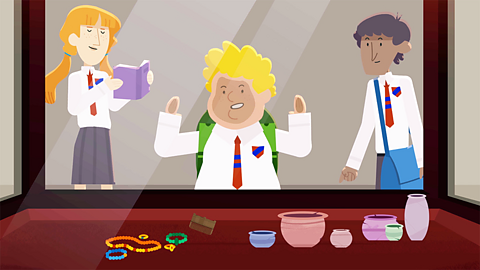Watch: Let’s meet Tutankhamun
Learn about the famous Egyptian Pharaoh Tutankhamun.
Child: Tutankhamun, ruler of Egypt, from around 1332 to 1323BC.
Tutankhamun: Yes, that’s me.
Child: You’re Tutankhamun?
Tutankhamun: The very same.
Child: I was expecting someone…
Tutankhamun: Older? I’ve been king since I was nine you know.
Child: Wow! I wasn’t even allowed to walk to school on my own and you’re in charge of a whole country?
Tutankhamun: I do have advisers. General Horemheb and an official called Ay, who help me make decisions.
Child: You haven’t ruled for long though.
You must have made a big impression!
Tutankhamun: Ah, that’s mainly because I fixed some mistakes my dad made.
You see, he forced everyone to worship a god called Aten which was pretty unpopular…
So I’ve let people worship their old gods and built lots of statues to them.
Child: So what’s all this stuff?
Tutankhamun: Just a few bits and pieces I’ll bring on my journey into the afterlife.
Child: Woah! You’ve got jewellery, chariots, furniture, wine, weapons… and board games?
Tutankhamun: Well, the afterlife goes on for a while so I’ll need something to do.
Child: I hope you’ll keep this lot safely tucked away in a tomb.
Tutankhamun: Yeah, sure, it’ll be in a tomb in the Valley of the Kings, so it’s like… well safe!
Child: I wouldn’t be so sure. My local museum has lots of things archaeologists have brought back from expeditions to Egypt.
I’m sure some of these items look familiar.
Explorer: Can you see anything?
Howard Carter: Yes! Wonderful things. Wonderful things!
What did Tutankhamun do?
- Tutankhamun became Pharaoh when he was about 9.
- He had powerful advisers who helped him rule.
- He let the people worship their old gods again and repaired damaged temples.
- He died when he was 18, and was buried in the Valley of the Kings.
- Scientists now believe he died of malaria.
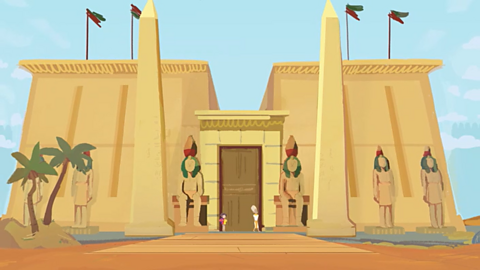
What was inside Tutankhamun's tomb?
In 1922 the Egyptologist Howard Carter discovered Tutankhamun’s tomb. In 1923 the tomb was finally opened. There were 5,398 items, including:
- Tutankhamun’s famous golden death mask
- a solid gold coffin
- thrones
- trumpets
- fresh linen
- a chariot
- a dagger made from meteorite iron.
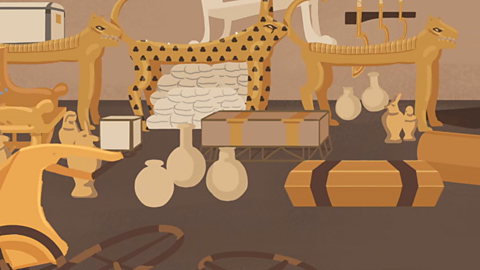
Watch: Tutankhamun's tomb
Dan Cruikshank tells the story of Howard Carter's discovery of Tutankhamun's tomb.
This is it. This where it happened. The magical moment. Where Carter found the entrance to the tomb.
It’s been tidied up a bit since his time but nevertheless it’s all very exciting.
Down these few steps is the entrance to the tomb itself.
This is the first door where Carter found the seals intact. He then removed the rubble and go down a descending passage as I am now.
Carter reached the second door here it is. Also filled with rubble, plastered over, seals intact. Goodness me, this is exciting.
Well, he then met a hole here, I suppose hoping against hope that they wouldn’t see a sea of devastation. Look through this little huddle and saw something that made him turn back to Carnarvon up there and say ‘I can see wonderful things’.
He realised the tomb had not been pillaged by robbers in antiquity much survived.
He saw in front of him a series of ritual couches, gilded with animal heads, chests down there, a great treasury of artefacts, bits of chariots all around.
And over here, where we came in, there is a wall since removed, a rubble wall, dividing this the antechamber from the burial chamber.
Here we see the sarcophagus of Tutankhamun with all the coffins inside it. Of course inside that coffin is the young pharaoh’s body.
Famous Pharoahs

Image caption, Hatshepsut (1478 - 1458BC)
Hatshepsut was the longest reigning female pharaoh of Ancient Egypt. She is considered one of the most successful pharaohs. She commissioned hundreds of grand buildings and established important trade routes.

Image caption, Amenhotep III (1391 BC - 1353BC)
Amenhotep III built many of Ancient Egypt's famous monuments, including the Luxor Temple and the Colossus of Memnon.
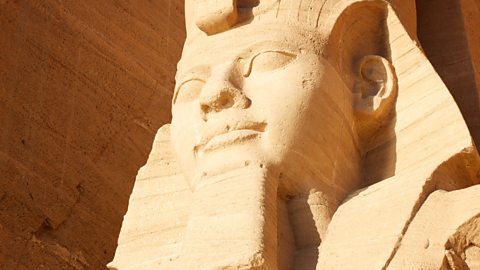
Image caption, Ramesses II (1279 - 1213BC)
Ramesses II was one of the most powerful pharaohs. He led many military expeditions, founded cities and had huge statues of himself built.
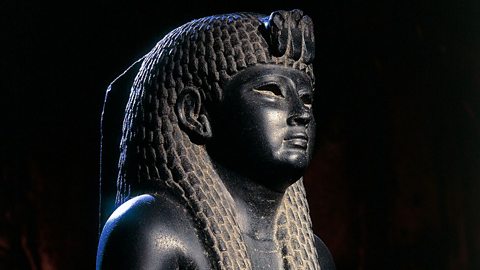
Image caption, Cleopatra VII (51 - 30BC)
Cleopatra VII was Ancient Egypt's last pharaoh, after her reign Egypt became a part of the Roman Empire.
1 of 4
Activities
Activity 1: Solve the puzzle
Activity 2: Quiz – King Tutankhamun
Activity 3: Make your own Tutankhamun mask
Make your own Tutankhamun mask. documentMake your own Tutankhamun mask
Download the ancient Egyptian headdress, colour it in and after placing it on your head, declare yourself Pharoah!

Activity 4: History Explorer game
Play this game to test your knowledge and learn even more facts about Ancient Egypt.
History Explorer: Secrets through time
History Explorer: Secrets through time: KS2 History
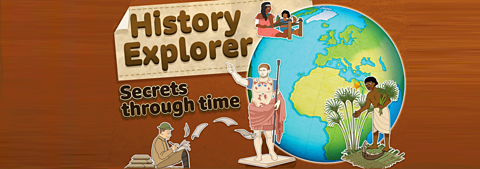
SAT’s preparation resources. activitySAT’s preparation resources
Get ready for the SATs papers with videos, activities, quizzes and games to refresh your knowledge and practise your skills.

More on Ancient Egypt
Find out more by working through a topic
- count17 of 18
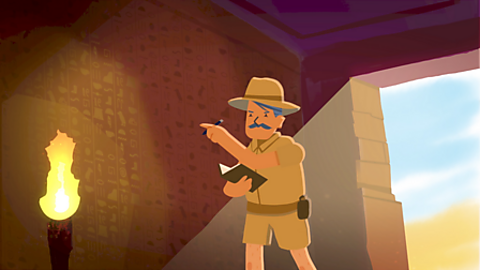
- count18 of 18

- count1 of 18
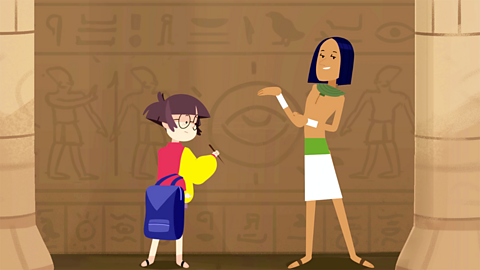
- count2 of 18
